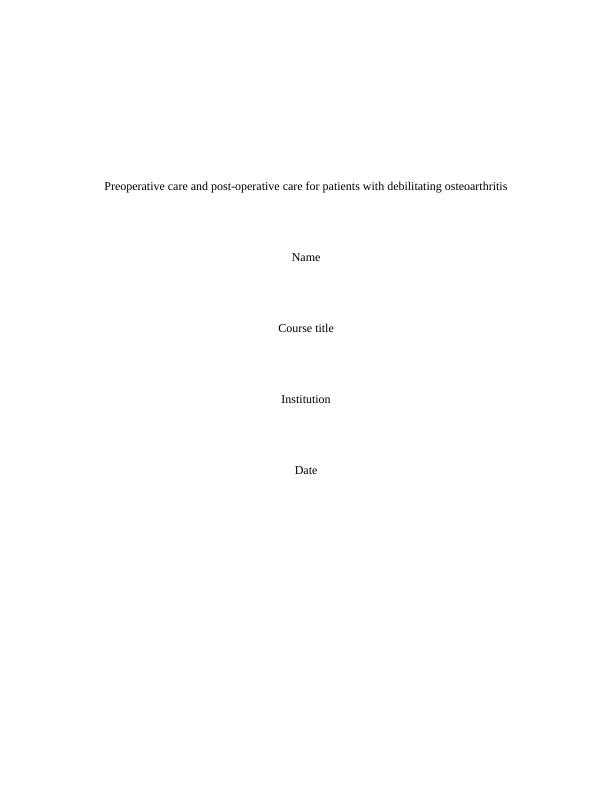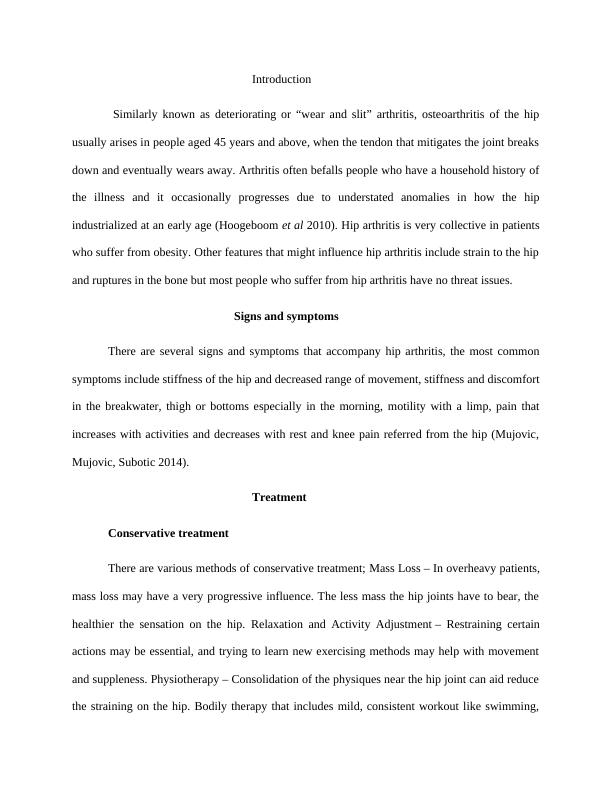Preoperative and Post-operative Care for Patients with Debilitating Osteoarthritis
9 Pages1948 Words82 Views
Added on 2023-06-04
About This Document
This article discusses the signs and symptoms of hip arthritis, conservative treatment options, and the total hip replacement surgical procedure. It also covers the preoperative and post-operative care procedures for patients undergoing total hip replacement surgery, as well as the risks and complications associated with the procedure.
Preoperative and Post-operative Care for Patients with Debilitating Osteoarthritis
Added on 2023-06-04
ShareRelated Documents
End of preview
Want to access all the pages? Upload your documents or become a member.
Acute Care Nursing: Assignment
|9
|2541
|32
Nursing Care During Total Hip Replacement
|8
|2384
|44
Nursing the Surgical Patient Essay 2022
|10
|2934
|37
Osteoarthritis: Pathophysiology, Clinical Manifestations, and Evidence-Based Treatment
|13
|3219
|112
Bilateral Knee Osteoarthritis: Pathophysiology, Treatment, and Nursing Interventions
|11
|2314
|26
Case study of patient with Osteo-Arthritis | Report
|12
|3210
|30



